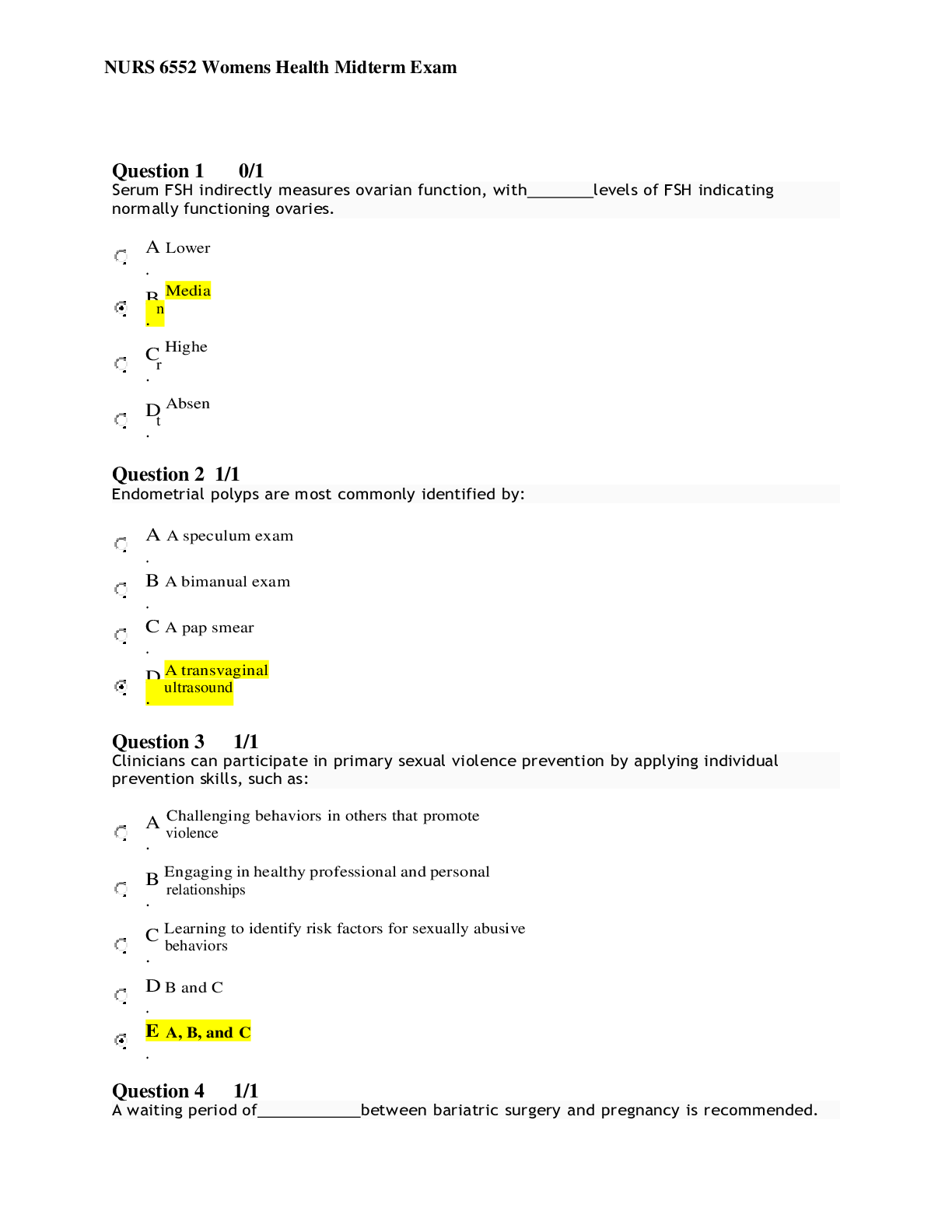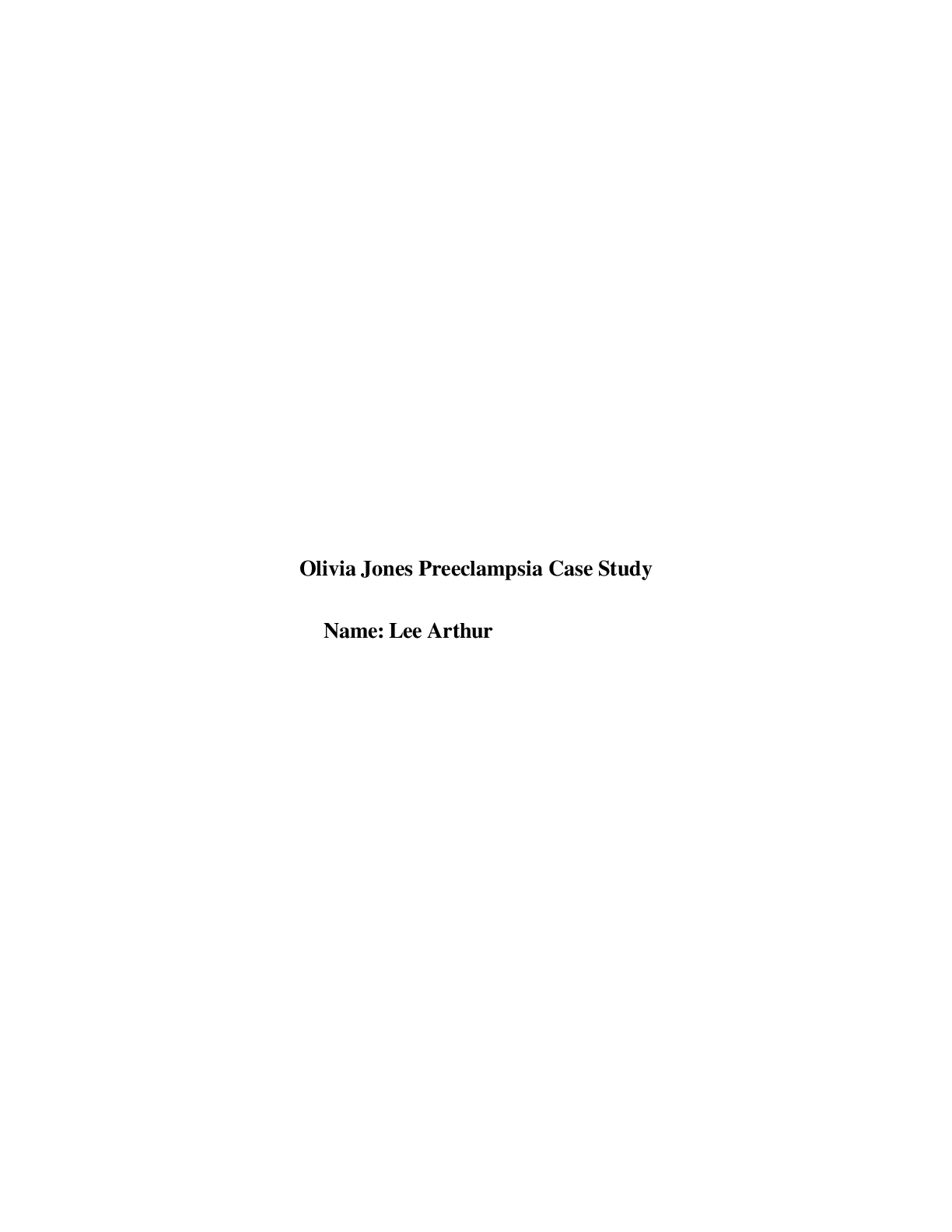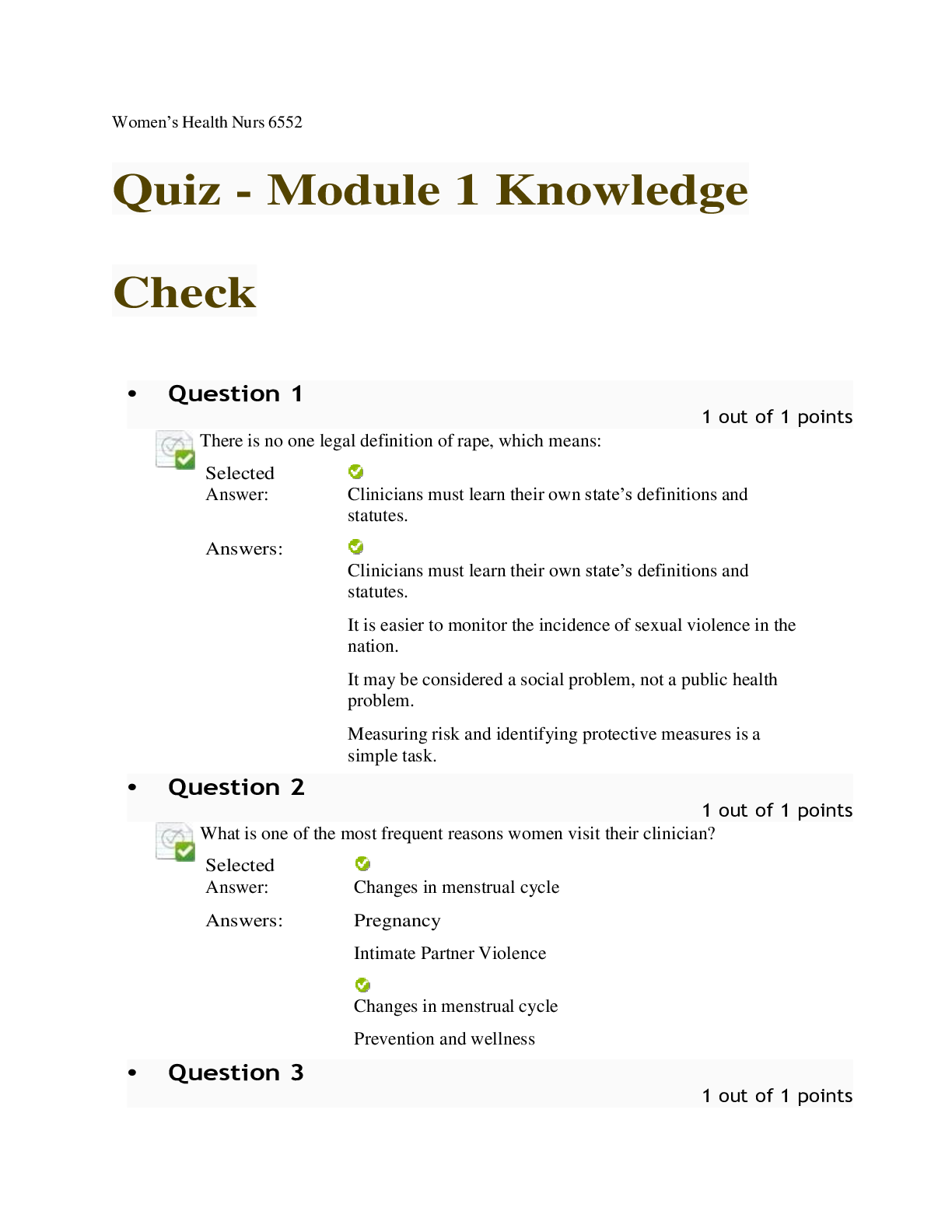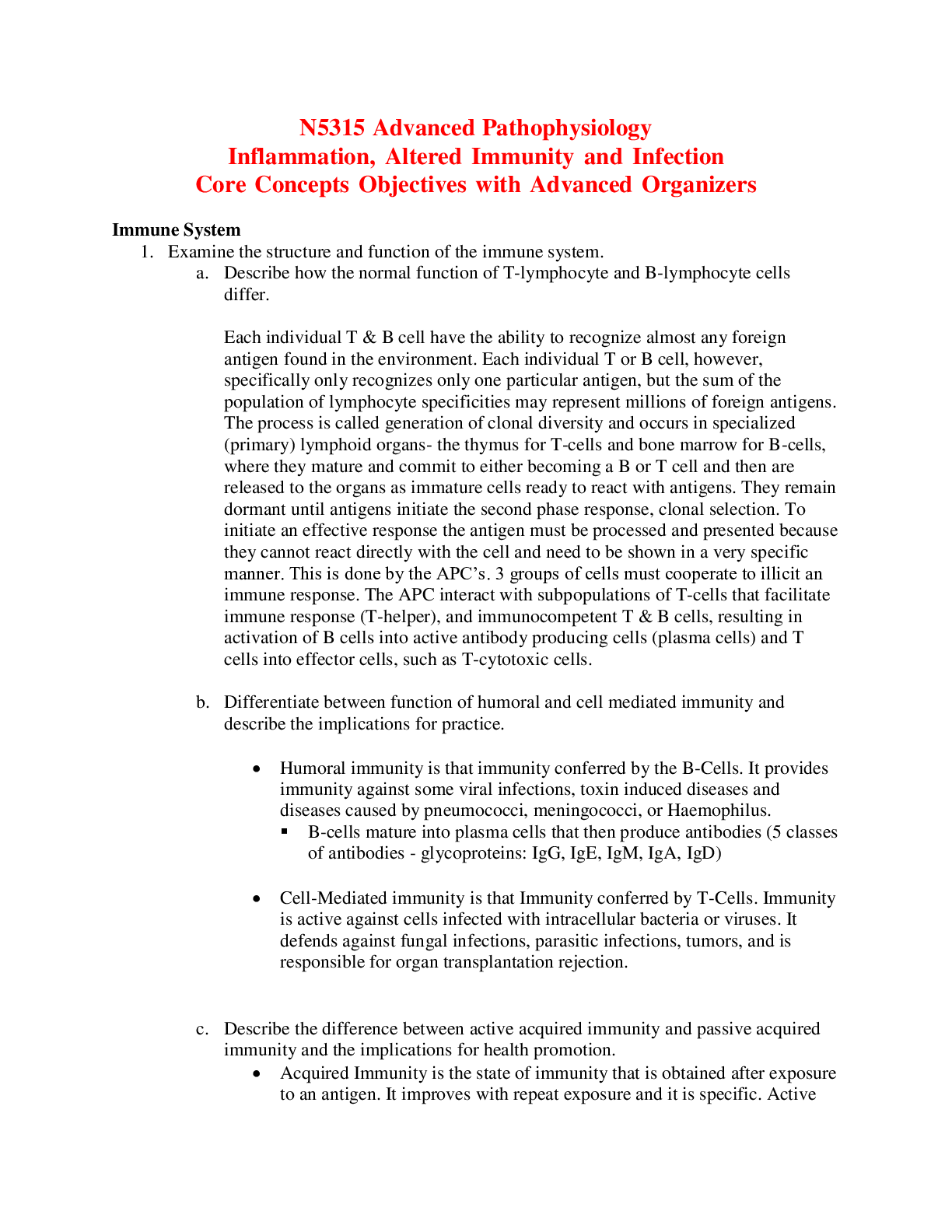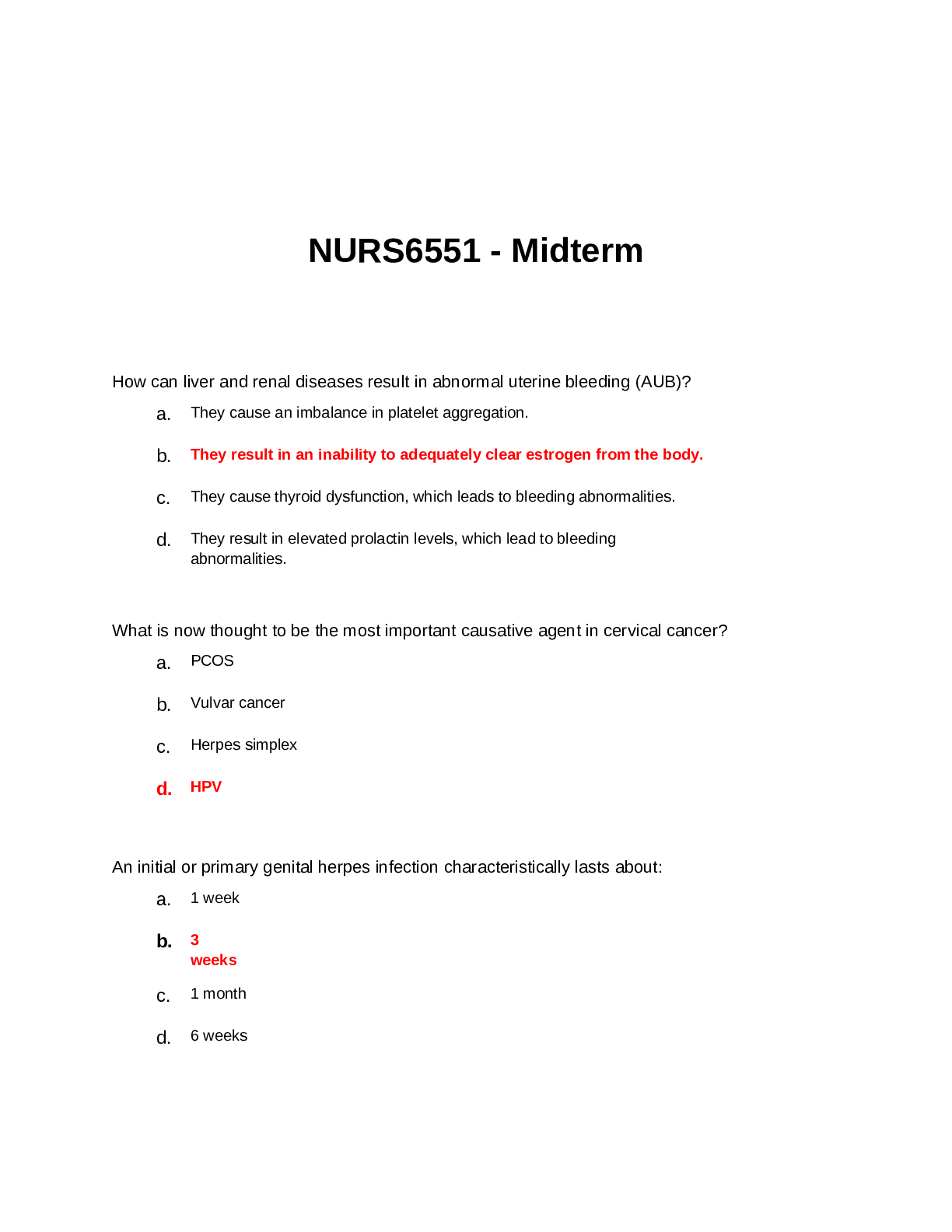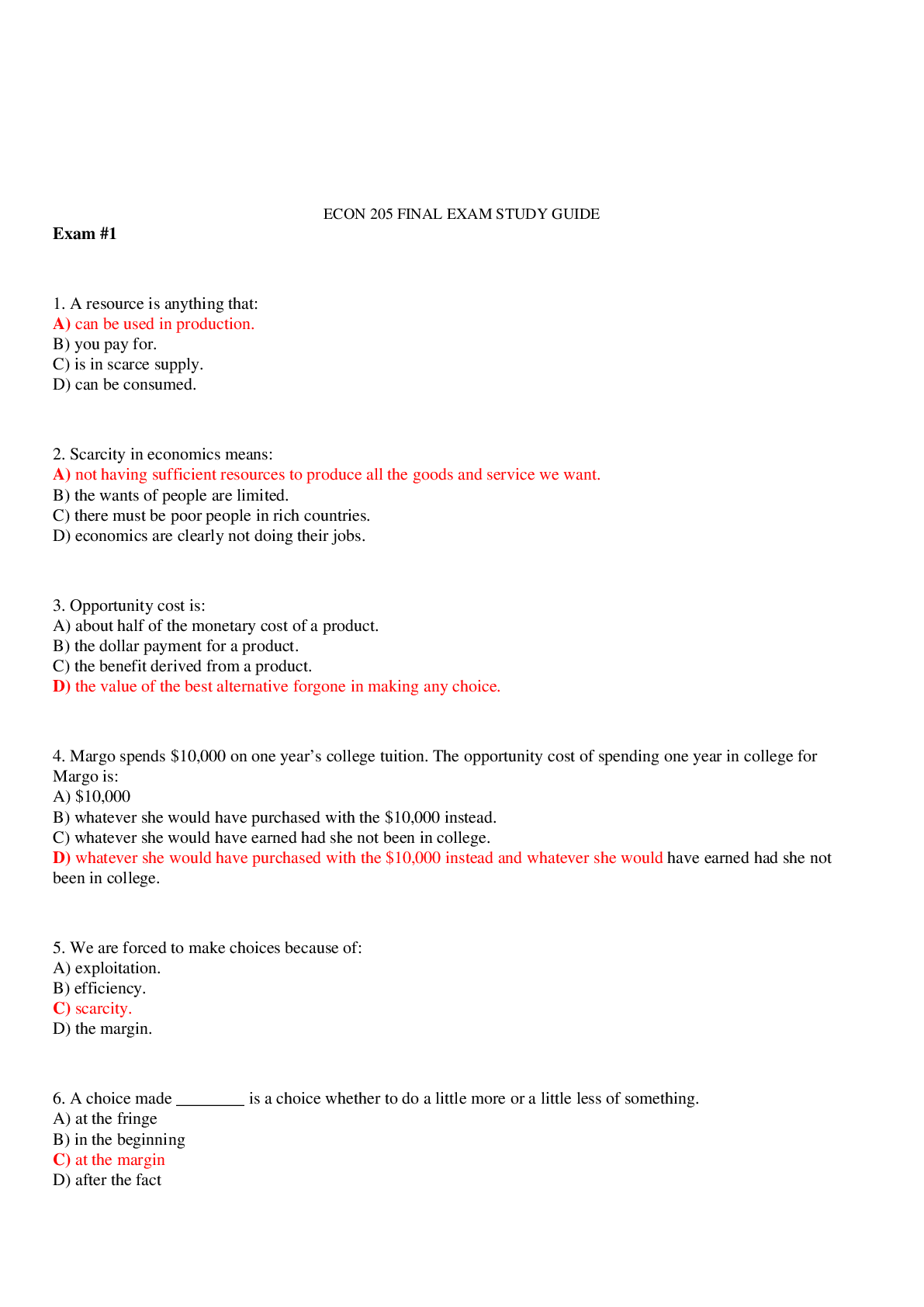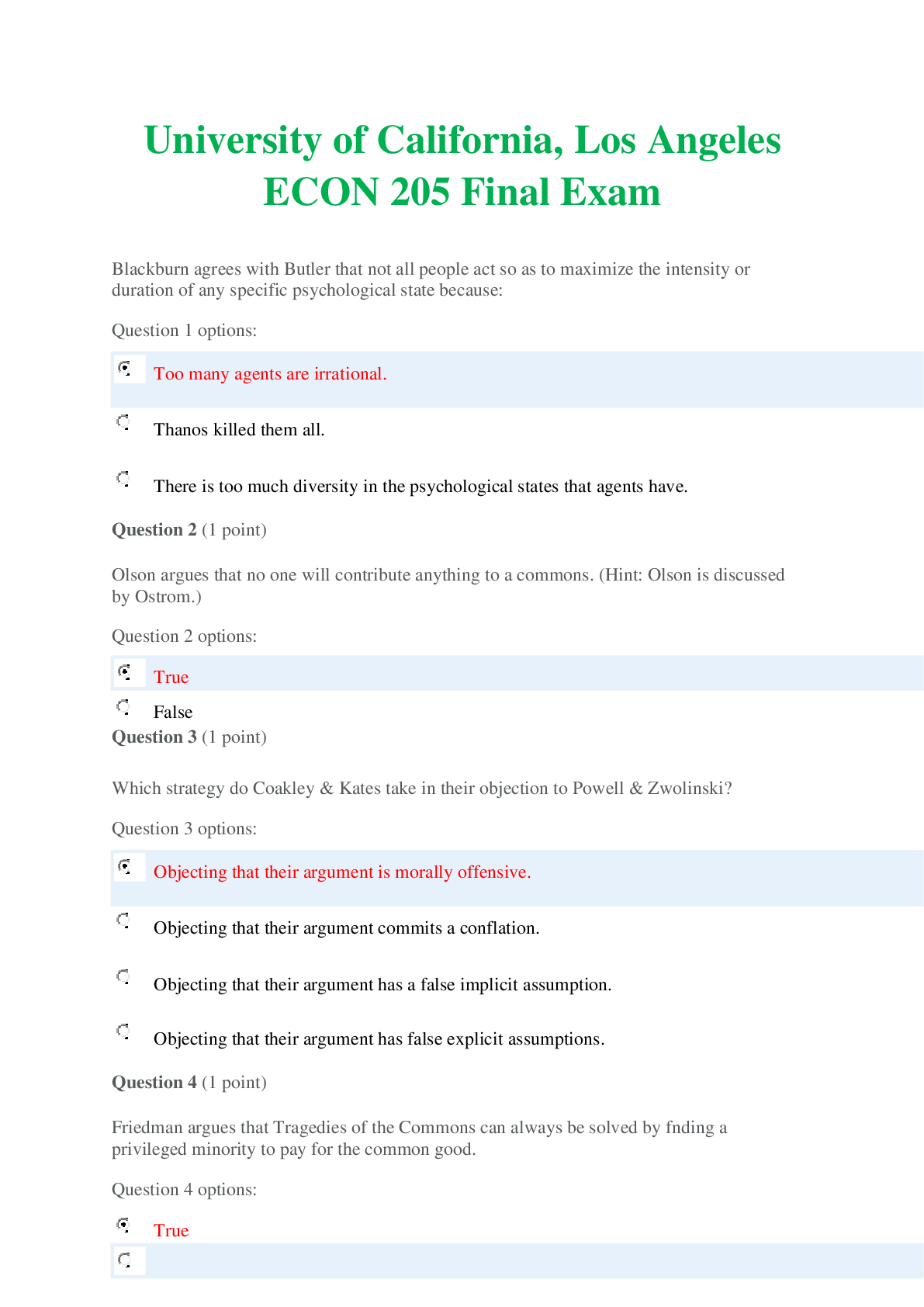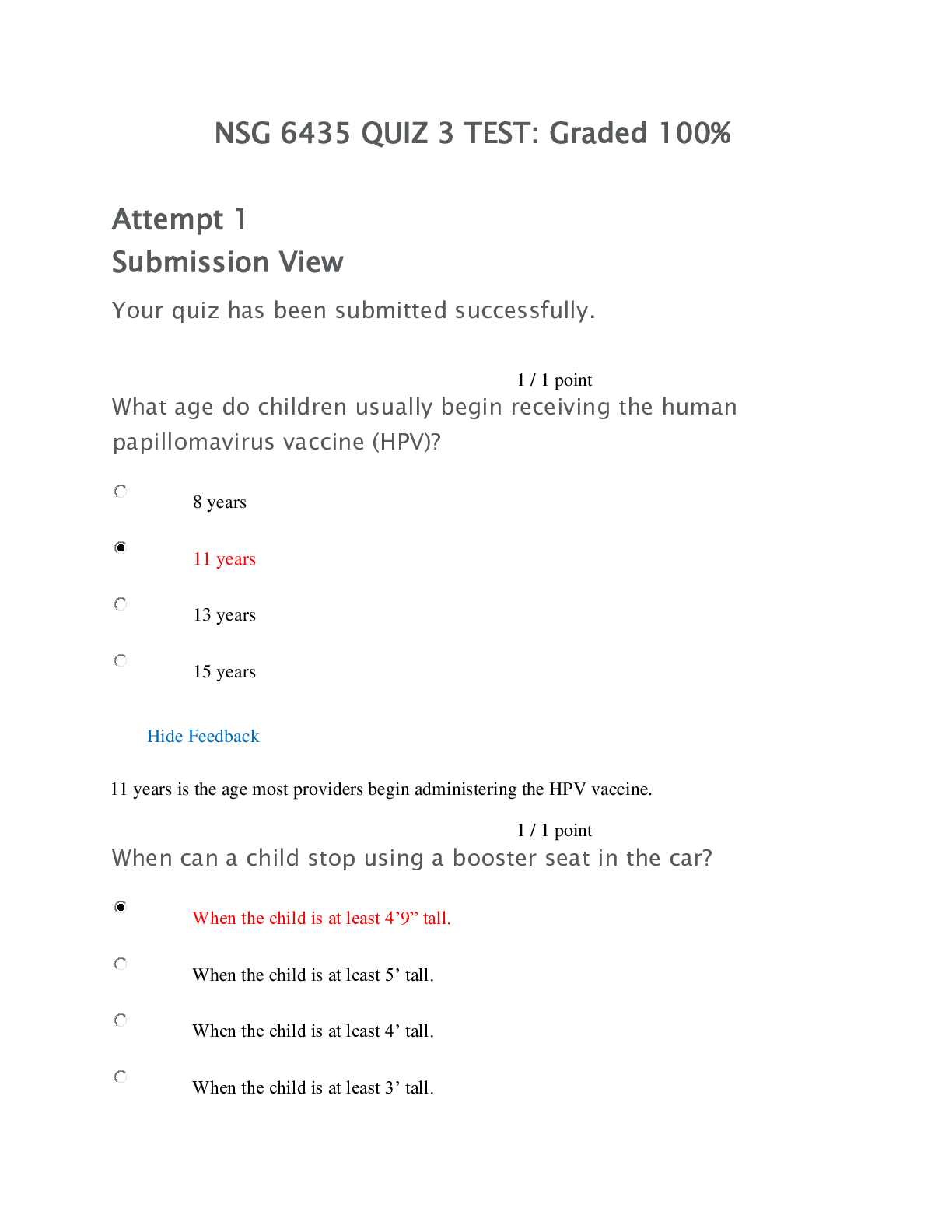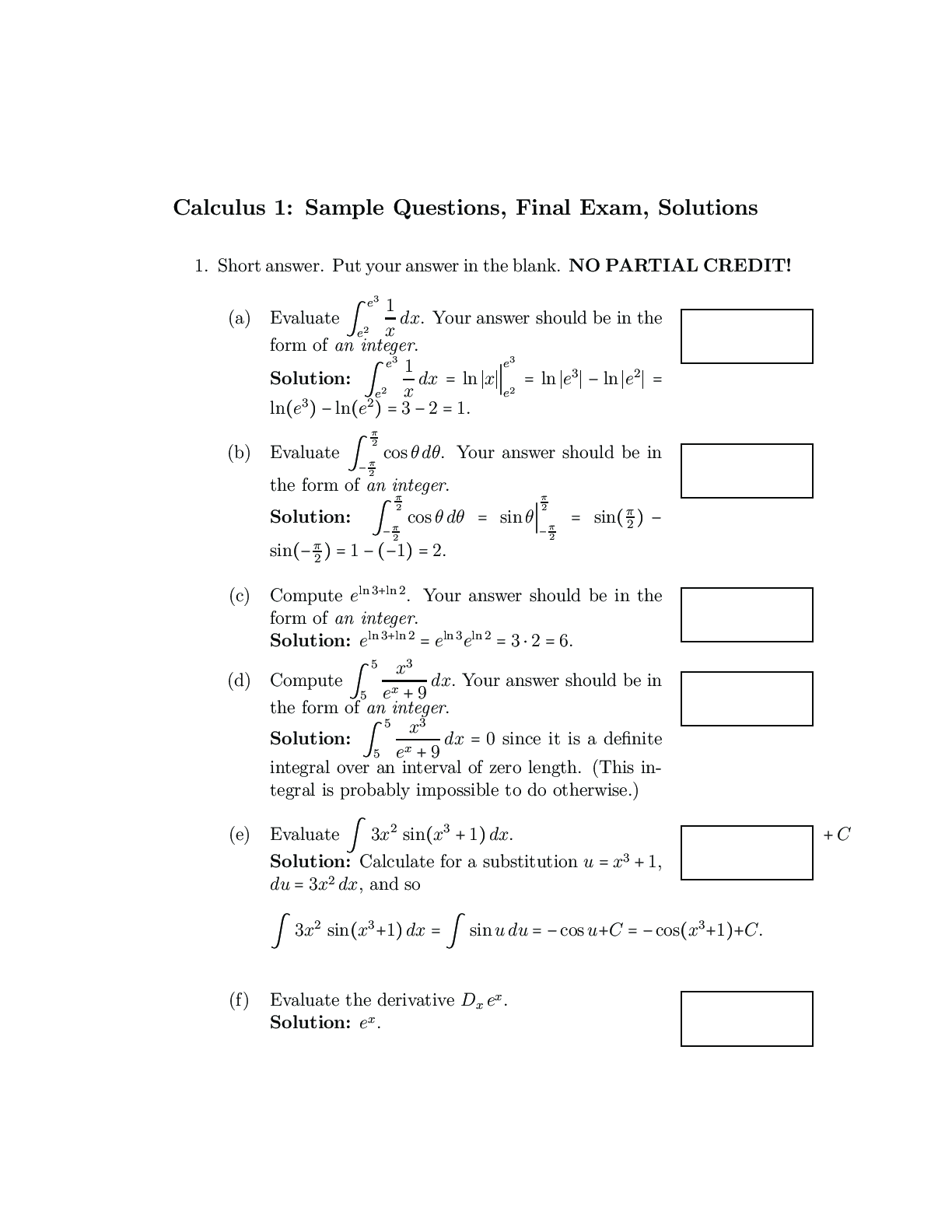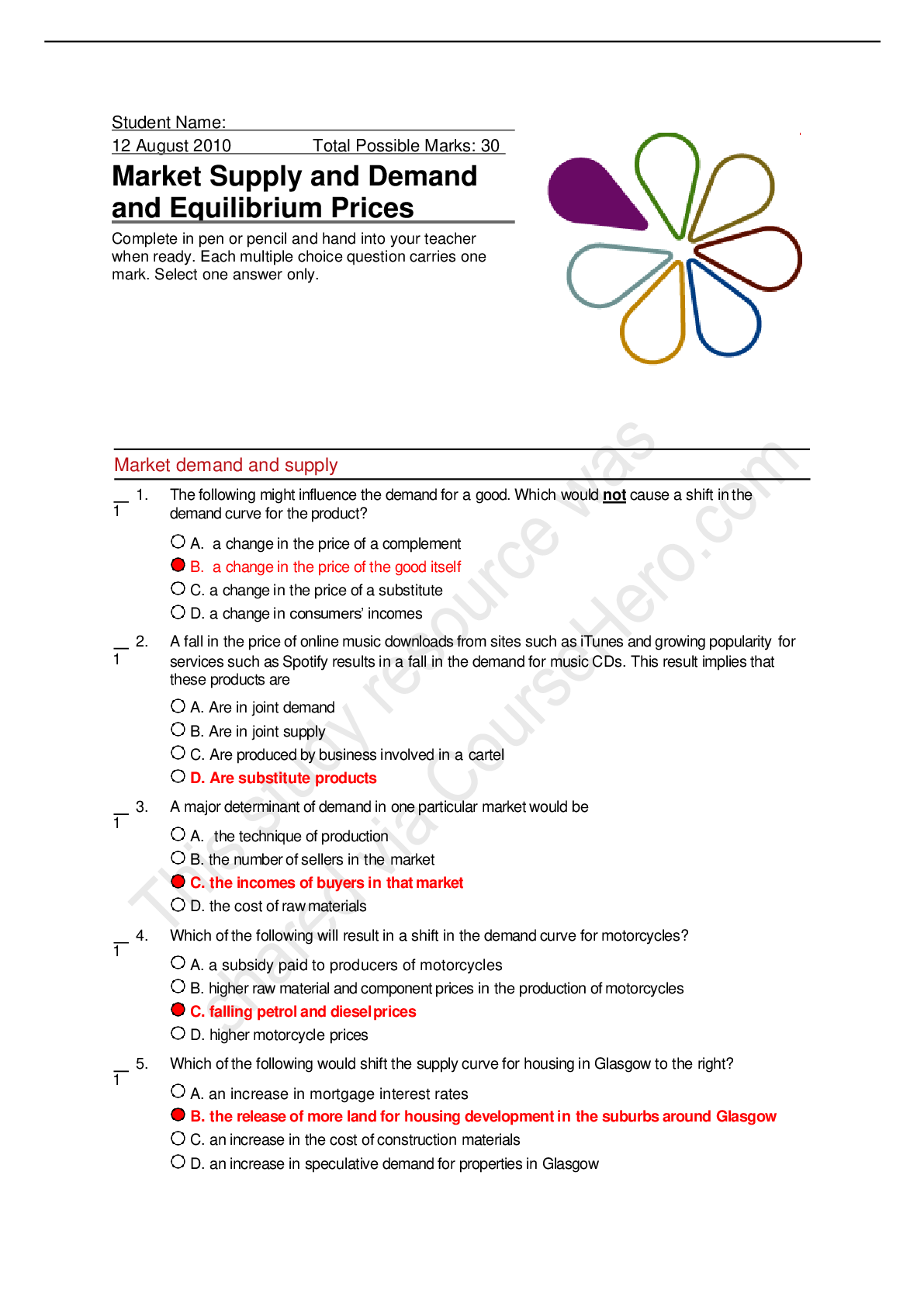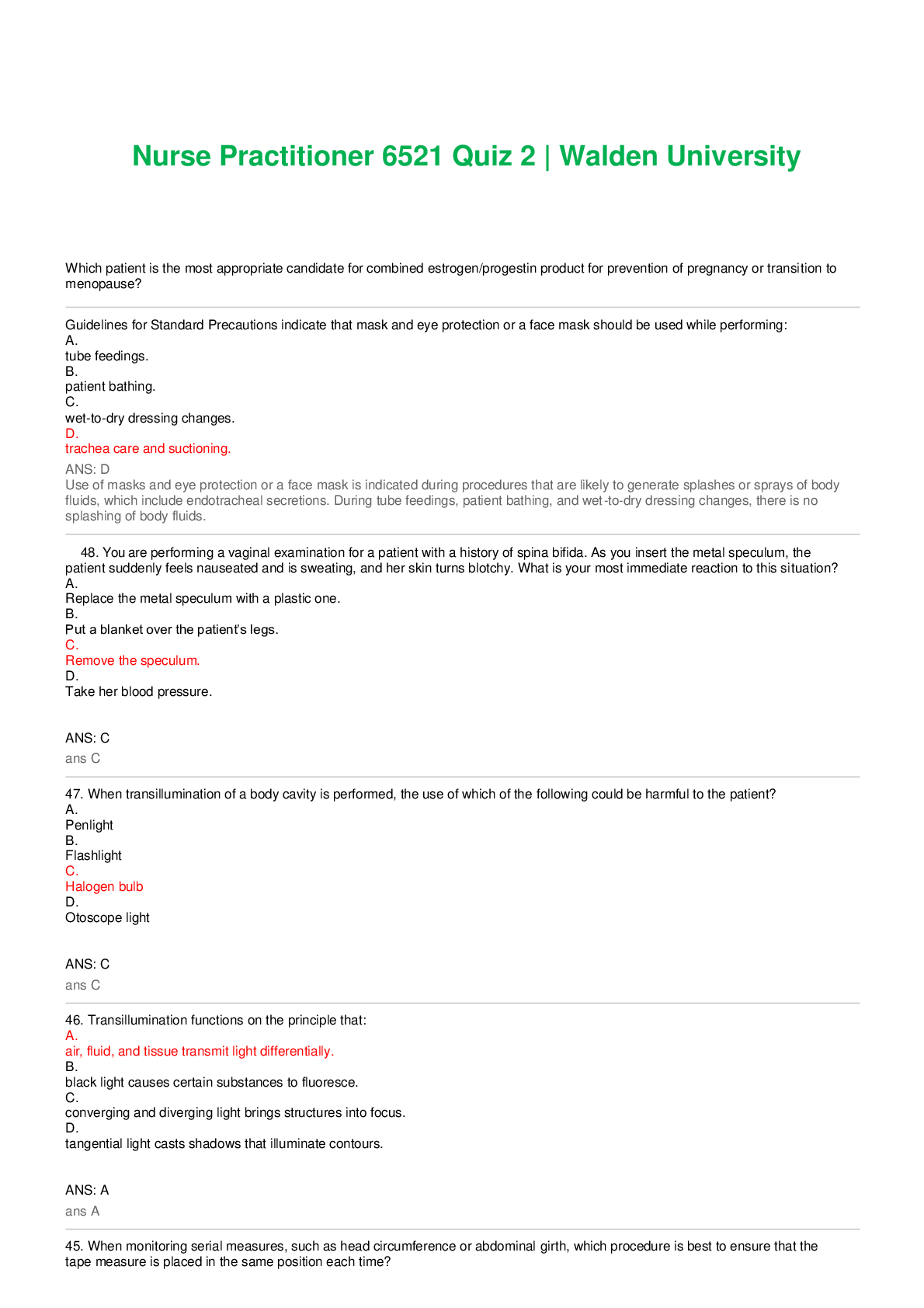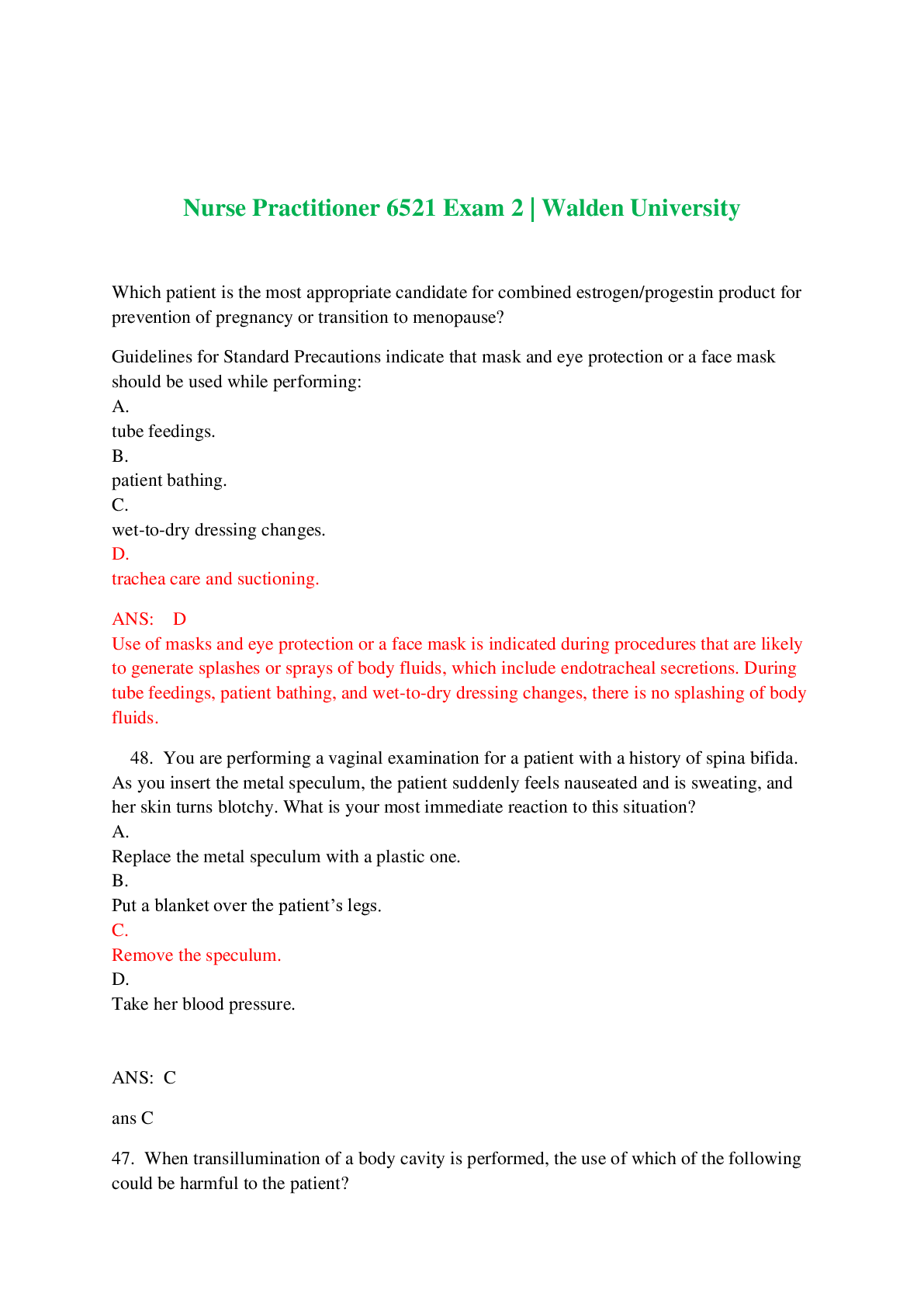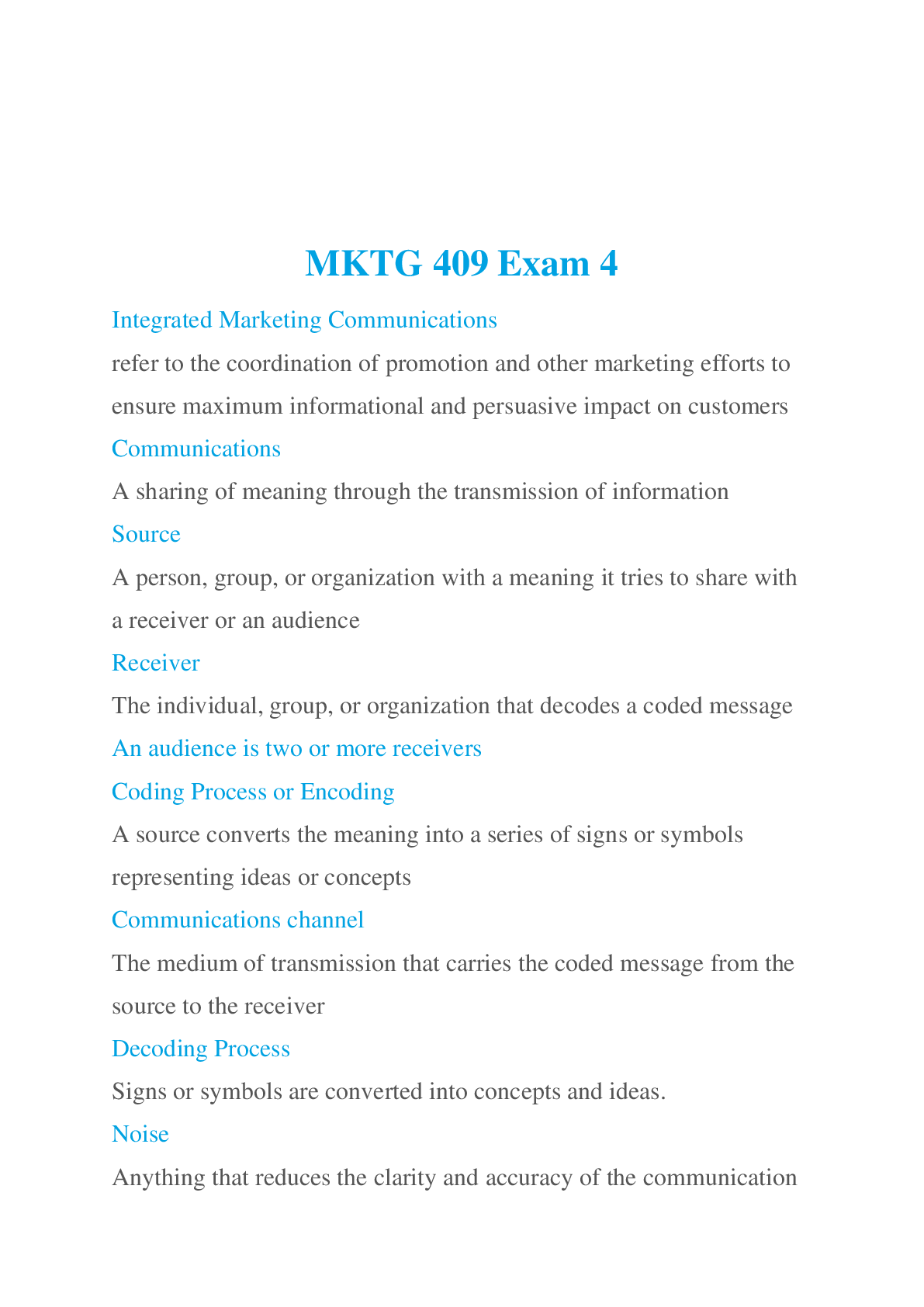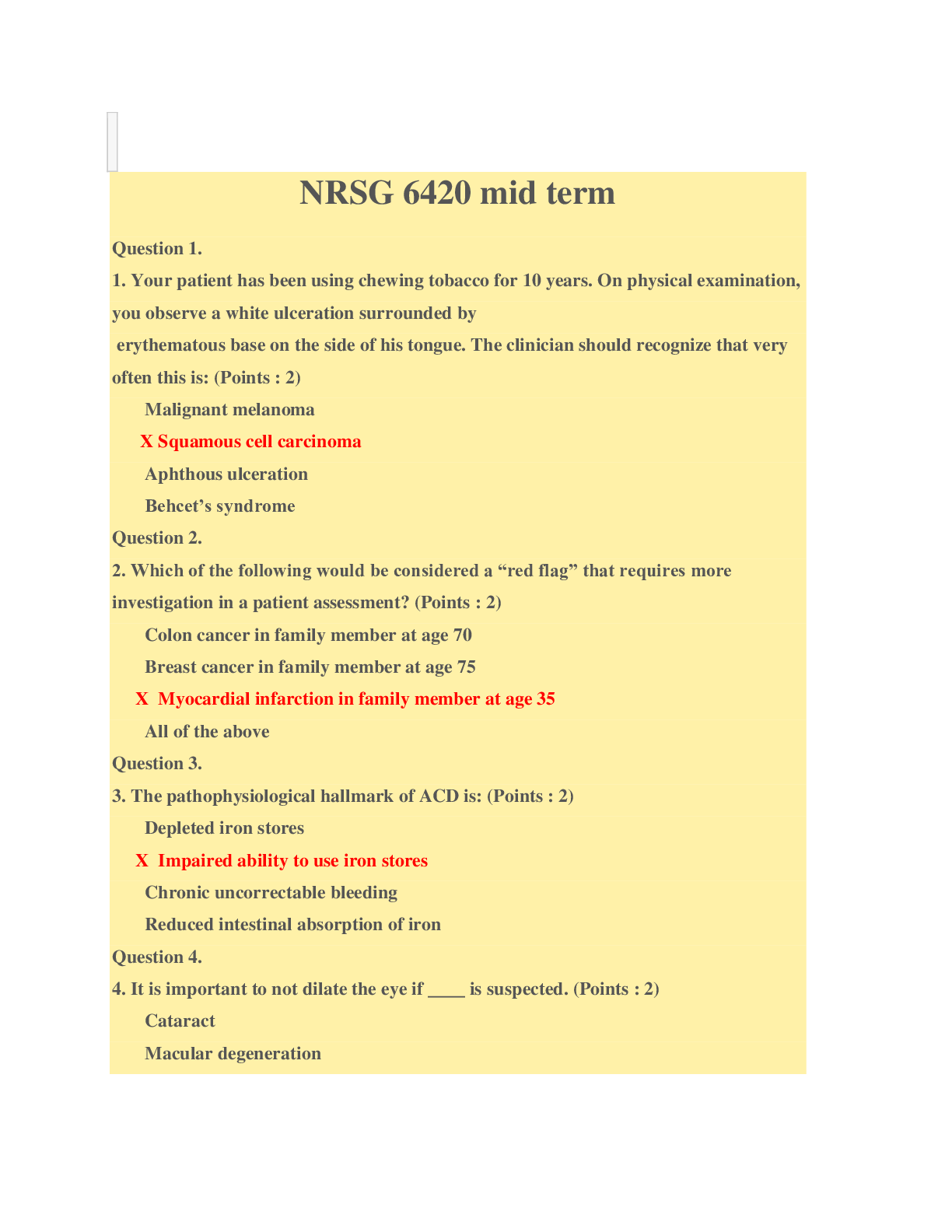Psychopharmacology FINAL EXAM 3
Document Content and Description Below
NURS 6630 Final Exam Contains 75 questions with 100% correct answers marked in blue The parents of a 7-year-old patient with ADHD are concerned about the effects of stimulants on their child. The ... parents prefer to start pharmacological treatment with a non-stimulant. Which medication will the PMHNP will most likely prescribe? The PMHNP is meeting with the parents of an 8-year-old patient who is receiving an initial prescription for D-amphetamine. The PMHNP demonstrates appropriate prescribing practices when she prescribes the following dose: The child will be prescribed 2.5 mg. An 8-year-old patient presents with severe hyperactivity, described as “ants in his pants.” Based on self-report from the patient, his parents, and his teacher; attention deficit hyperactivity disorder (ADHD) is suspected. What medication is the PMNHP most likely to prescribe? A 9-year-old female patient presents with symptoms of both attention deficit hyperactivity disorder (ADHD) and oppositional defiant disorder. In evaluating her symptoms, the PMHNP determines that which of the following medications may be beneficial in augmenting stimulant medication? Parents of a 12-year-old boy want to consider attention deficit hyperactivity disorder (ADHD) medication for their son. Which medication would the PMHNP start? A 14-year-old patient is prescribed Strattera and asks when the medicine should be taken. What does the PMHNP understand regarding the drug’s dosing profile? An 18-year-old female with a history of frequent headaches and a mood disorder is prescribed topiramate (Topamax), 25 mg by mouth daily. The PMHNP understands that this medication is effective in treating which condition(s) in this patient? A 26-year-old female patient with nicotine dependence and a history of anxiety presents with symptoms of attention deficit hyperactivity disorder (ADHD). Based on the assessment, what does the PMHNP consider? The PMHNP is evaluating a 30-year-old female patient who states that she notices pain and a drastic change in mood before the start of her menstrual cycle. The patient states that she has tried diet and lifestyle changes but nothing has worked. What will the PMHNP most likely do? A 43-year-old male patient is seeking clarification about treating attention deficit hyperactivity disorder (ADHD) in adults and how it differs from treating children, since his son is on medication to treat ADHD. The PMHNP conveys a major difference is which of the following? The PMHNP is assessing a 49-year-old male with a history of depression, post- traumatic stress disorder (PTSD), alcoholism with malnutrition, diabetes mellitus type 2, and hypertension. His physical assessment is unremarkable with the exception of peripheral edema bilaterally to his lower extremities and a chief complaint of pain with numbness and tingling to each leg 5/10. The PMHNP starts this patient on a low dose of doxepin (Sinequan). What is the next action that must be taken by the PMHNP? Mrs. Rosen is a 49-year-old patient who is experiencing fibro-fog. What does the PMHNP prescribe for Mrs. Rosen to improve this condition? A 63-year-old patient presents with the following symptoms. The PMHNP determines which set of symptoms warrant prescribing a medication? Select the answer that is matched with an appropriate treatment. A 71-year-old male patient comes to an appointment with his 65-year-old wife. They are both having concerns related to her memory and ability to recognize faces. The PMNHP is considering prescribing memantine (Namenda) based on the following symptoms: A 72-year-old male patient is in the early stages of Alzheimer’s disease. The PMHNP determines that improving memory is a key consideration in selecting a medication. Which of the following would be an appropriate choice? A 75-year-old male patient diagnosed with Alzheimer’s disease presents with agitation and aggressive behavior. The PMHNP determines which of the following to be the best treatment option? An 80-year-old female patient diagnosed with Stage II Alzheimer’s has a history of irritable bowel syndrome. Which cholinergic drug may be the best choice for treatment given the patient’s gastrointestinal problems? The PMHNP understands that slow-dose extended release stimulants are most appropriate for which patient with ADHD? Mrs. Kenner is concerned that her teenage daughter spends too much time on the Internet. She inquiries about possible treatments for her daughter’s addiction. Which response by the PMHNP demonstrates understanding of pharmacologic approaches for compulsive disorders? Mr. Peterson is meeting with the PMHNP to discuss healthier dietary habits. With a BMI of 33, Mr. Peterson is obese and needs to modify his food intake. “Sometimes I think I’m addicted to food the way some people are addicted to drugs,” he says. Which statement best describes the neurobiological parallels between food and drug addiction? The PMHNP wants to prescribe Mr. Barber a mood stabilizer that will target aggressive and impulsive symptoms by decreasing dopaminergic neurotransmission. Which mood stabilizer will the PMHNP select? Kevin is an adolescent who has been diagnosed with kleptomania. His parents are interested in seeking pharmacological treatment. What does the PMHNP tell the parents regarding his treatment options? What will the PMHNP most likely prescribe to a patient with psychotic aggression who needs to manage the top-down cortical control and the excessive drive from striatal hyperactivity? Which statement best describes a pharmacological approach to treating patients for impulsive aggression? The PMHNP is selecting a medication treatment option for a patient who is exhibiting psychotic behaviors with poor impulse control and aggression. Of the available treatments, which can help temper some of the adverse effects or symptoms that are normally caused by D2 antagonism? The PMHNP is discussing dopamine D2 receptor occupancy and its association with aggressive behaviors in patients with the student. Why does the PMHNP prescribe a standard dose of atypical antipsychotics? Why does the PMHNP avoid prescribing clozapine (Clozaril) as a first-line treatment to the patient with psychosis and aggression? Which of the following is a true statement regarding the use of stimulants to treat attention deficit hyperactivity disorder (ADHD)? The PMHNP is providing a workshop for pediatric nurses, and a question is posed about noradrenergic agents to treat ADHD. Which of the following noradrenergic agents have norepinephrine reuptake inhibitor (NRI) properties that can treat ADHD? The PMHNP is caring for a patient on risperidone (Risperdal). Which action made by the PMHNP exhibits proper care for this patient? A PMHNP supervisor is discussing with a nursing student how stimulants and noradrenergic agents assist with ADHD symptoms. What is the appropriate response? A patient is prescribed D-methylphenidate, 10-mg extended-release capsules. What should the PMHNP include when discussing the side effects with the patient? The PMHNP is teaching parents about their child’s new prescription for Ritalin. What will the PMHNP include in the teaching? A young patient is prescribed Vyvanse. During the follow-up appointment, which comment made by the patient makes the PMHNP think that the dosing is being done incorrectly? A patient is being prescribed bupropion and is concerned about the side effects. What will the PMHNP tell the patient regarding bupropion? [Show More]
Last updated: 2 years ago
Preview 1 out of 13 pages
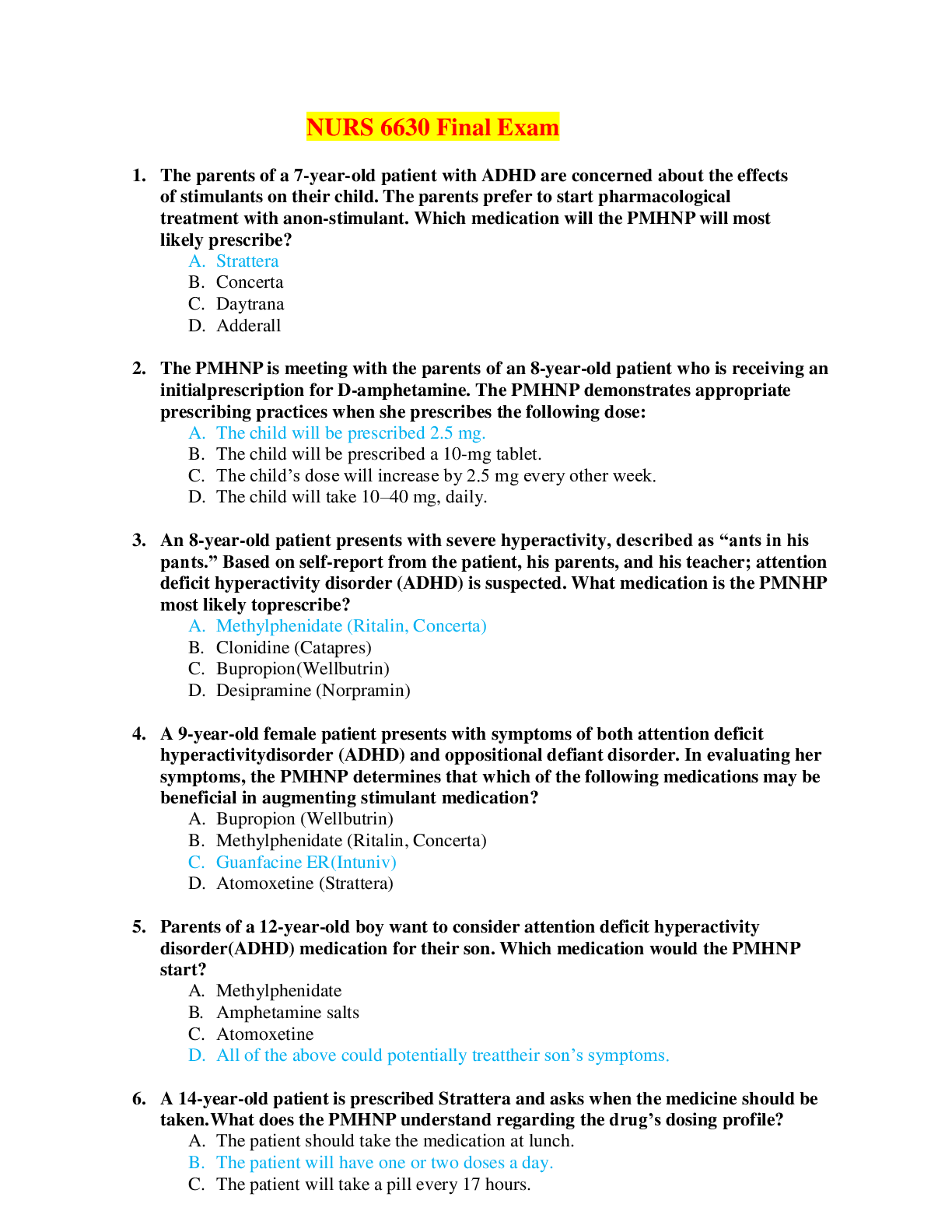
Buy this document to get the full access instantly
Instant Download Access after purchase
Buy NowInstant download
We Accept:

Reviews( 0 )
$14.00
Can't find what you want? Try our AI powered Search
Document information
Connected school, study & course
About the document
Uploaded On
Apr 12, 2021
Number of pages
13
Written in
Additional information
This document has been written for:
Uploaded
Apr 12, 2021
Downloads
0
Views
62

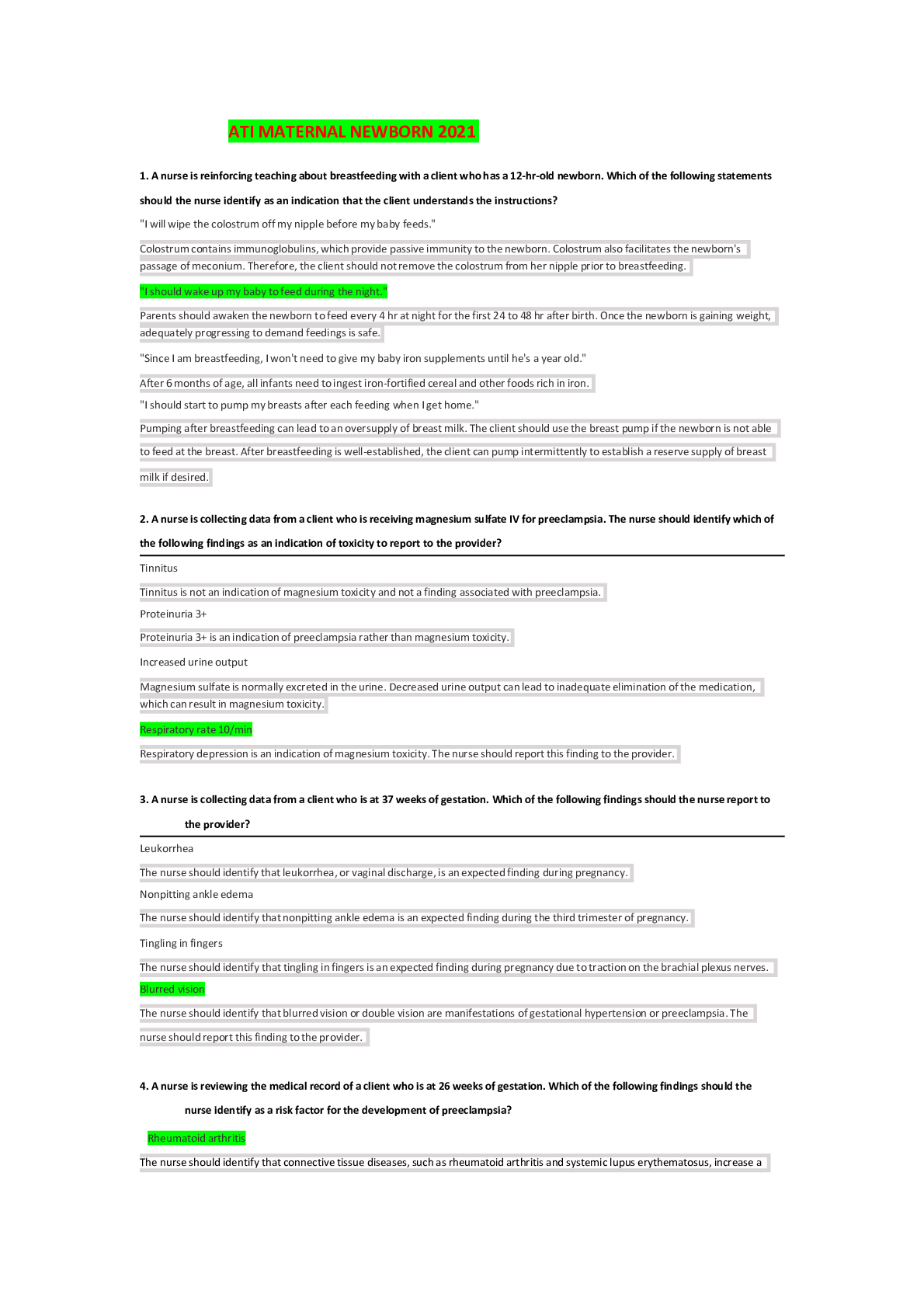
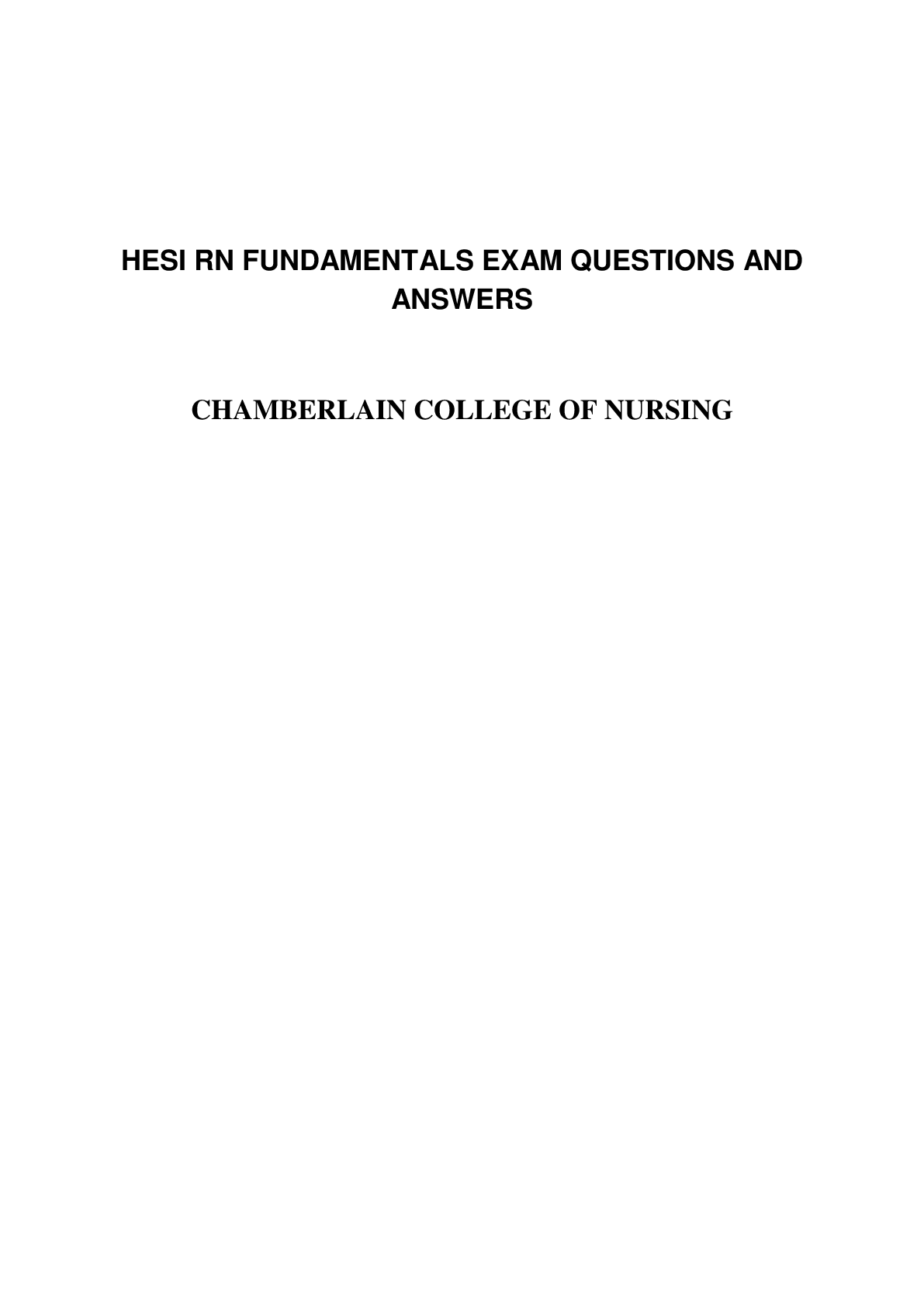
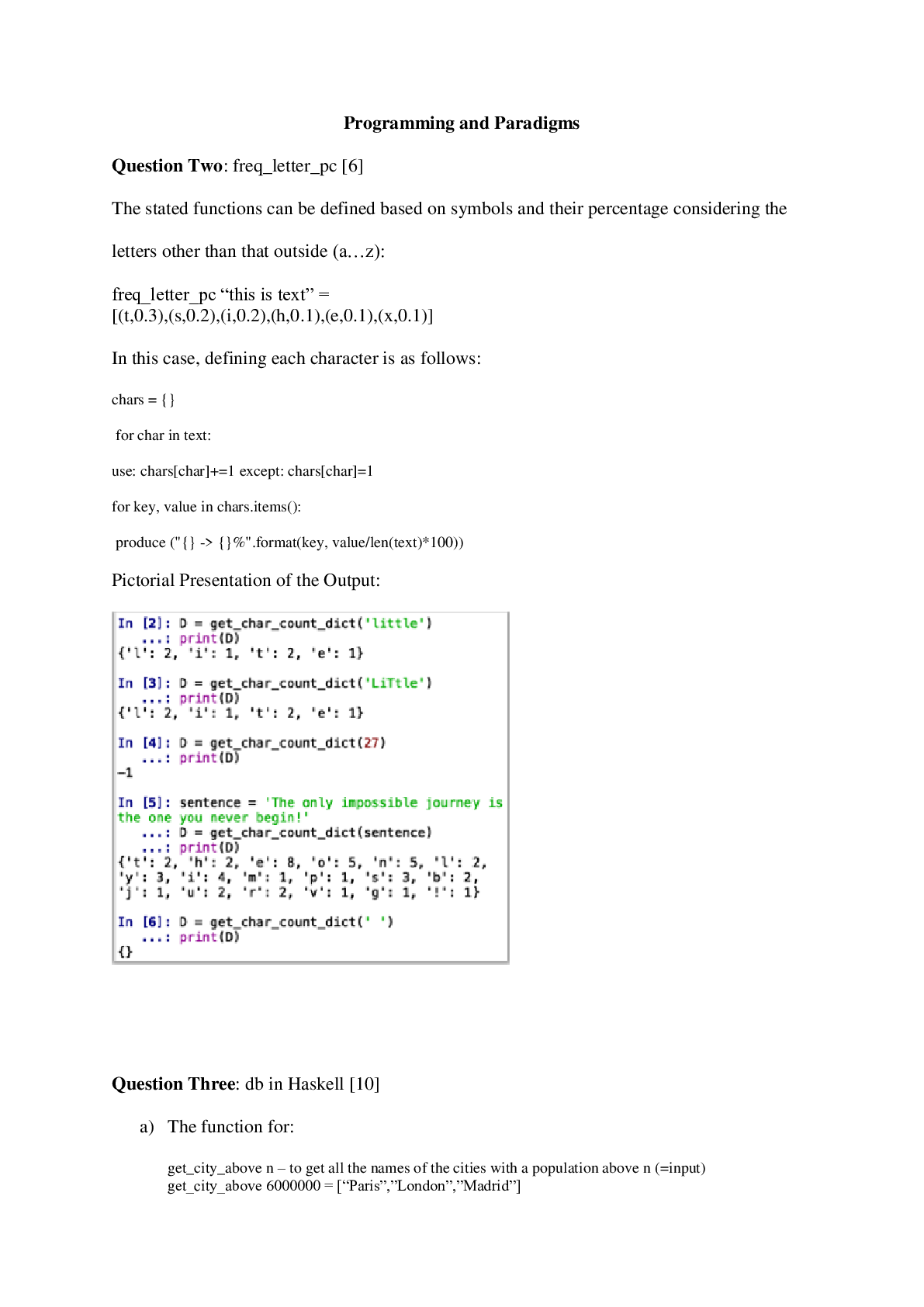


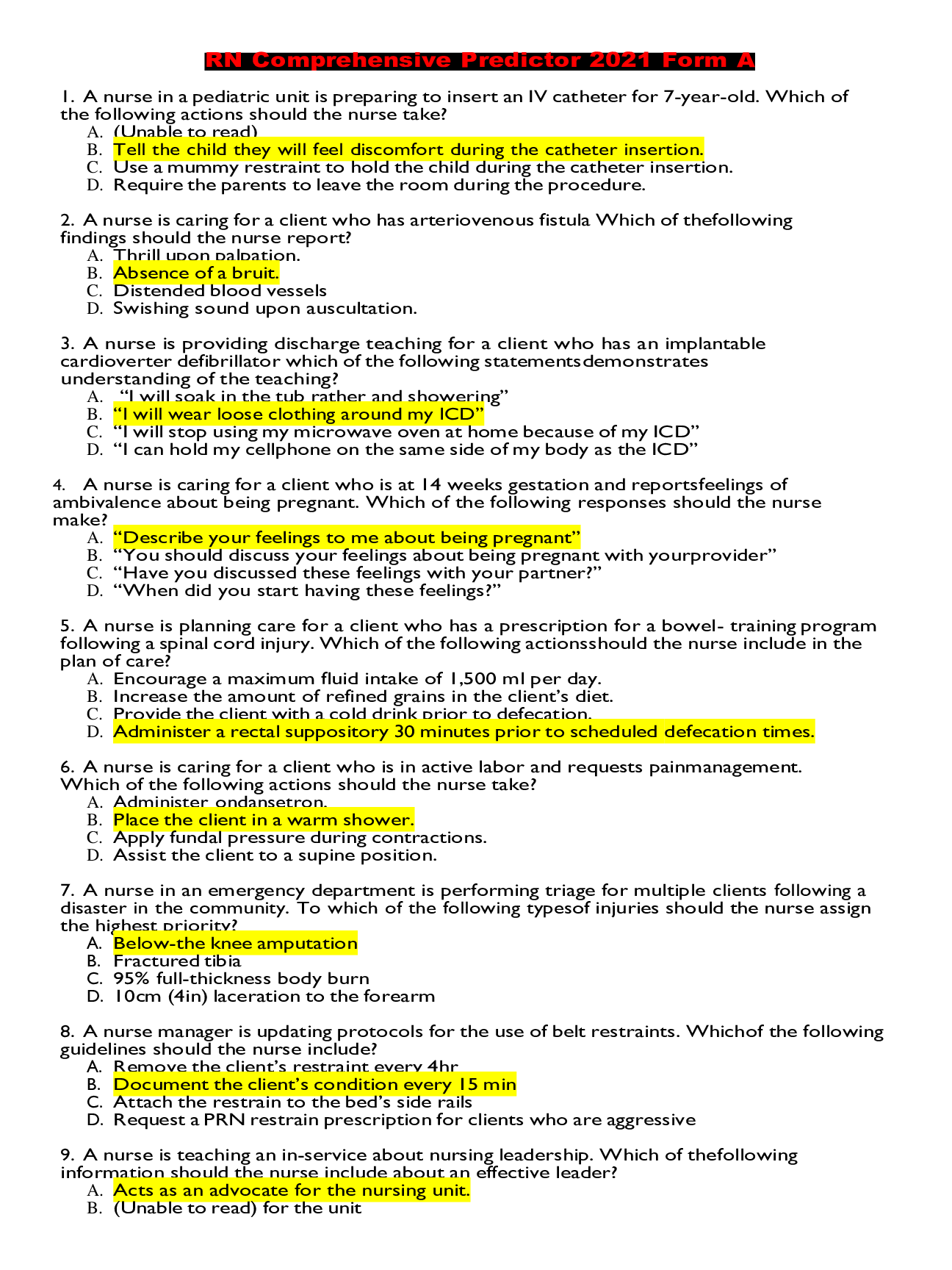
.png)
